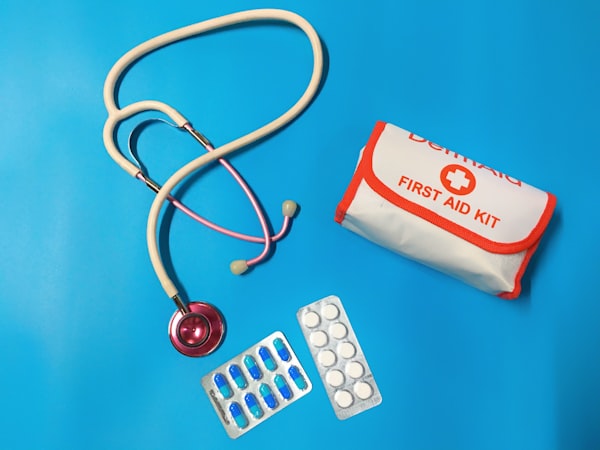Can Adults Get Diaper Rash Without Wearing Diapers?
Diaper rash isn't just for babies—adults can get it too, even without wearing diapers. This article explores the causes of adult diaper rash, such as moisture, friction, and skin sensitivity, and offers tips on prevention and treatment to keep your skin healthy and irritation-free

What is Diaper Rash?
Diaper rash, also known as diaper dermatitis, is a common skin condition that affects individuals who wear diapers or incontinence products. It is characterized by redness, irritation, and inflammation of the skin in the genital, buttock, and thigh areas. Diaper rash can be caused by a combination of factors, including moisture buildup, skin irritation, and bacterial or fungal infections. When the skin is exposed to prolonged wetness, it becomes more susceptible to irritation and breakdown, leading to the development of diaper rash. Understanding the causes and symptoms of diaper rash is crucial for effective prevention and treatment.
Diaper Rash in Adults
Diaper rash is a common skin irritation that occurs in both infants and adults. It is caused by a variety of factors, including prolonged wearing of wet or dirty diapers, skin sensitivity, bacterial and fungal infections, and poor hygiene practices. Although diaper rash is most often seen in babies, adults can also develop diaper rash due to various factors. This guide will cover the causes, signs, treatments, and prevention of adult diaper rash.
If you feel that you may have a diaper rash, it is important to seek advice from your doctor. They can help you determine the best course of treatment for your condition.
What Causes Diaper Rash in Adults?
Diaper rash is a common condition that affects both babies and adults who wear diapers. In adults, diaper rash can range from mild redness and irritation to a severe, blistering rash with significant pain and inflamed skin. Understanding what causes diaper rash is key to proper treatment and preventing it from happening again.
Common Causes of Diaper Rash in Adults
The most common cause of diaper rash in adults is prolonged exposure to urine and/or feces. When skin is in contact with either of these substances for too long, it can begin to breakdown and become irritated. Other factors that can cause or worsen adult diaper rash include medications, certain skin allergies, yeast infections, and excessive friction to the skin.
Identifying Adult Diaper Rash
Adult diaper rash can be identified by its appearance. It typically appears as bright red or pink patches of skin with bumps or blisters. It may also be accompanied by itching, stinging, or burning. The rash can vary in severity. In more severe cases, it may spread further onto the abdomen or back, indicating a severe diaper rash.
It is important to note that any rash in the diaper area should be examined by a doctor. Diaper rash can resemble other skin conditions like eczema, contact dermatitis, or a fungal infection. A doctor can help to identify the cause of the rash and provide an appropriate treatment plan.
Appearance of Adult Diaper Rash
Diaper rash can look different from one adult to the next, depending on how severe it is. Generally, an adult diaper rash will appear as patches of redness on the skin, usually in the region of the buttocks, groin and genital areas. In some cases, the rash may look more like a widespread area of redness. In more severe cases of diaper rash, bumps or blisters may form on the skin, indicating severe diaper rashes.
It is important to note that adults may experience different levels of discomfort associated with a diaper rash. Some may only experience a mild itchiness or irritation while others may have more intense pain, burning, and itching. It is essential to pay close attention to the signs and symptoms of diaper rash so that it can be treated properly.
A mild case of diaper rash may not require much treatment but it is important to take preventative steps to prevent further irritation. This may include applying a protective barrier cream before bed, changing diapers often, and using a gentle soap and warm water when cleaning the diaper area.
In more severe cases, medical intervention may be necessary. If the rash does not improve after two to three days of home care, it is important to call your doctor or healthcare provider to discuss further treatment options.
Symptoms of Adult Diaper Rash
Adult diaper rash can manifest in different ways, ranging from mild to severe. Common symptoms include:
- Redness and inflammation of the skin
- Itching, burning, or stinging sensations
- Blisters or sores
- Skin dryness and irritation
- Increased sensitivity to touch or pressure
In severe cases, adult diaper rash can lead to more serious complications, such as skin infections, abscesses, and scarring. Recognizing these symptoms early and taking appropriate action can help prevent the rash from worsening and promote faster healing.
Treating Adult Diaper Rash
Diaper rash can be treated with a range of at-home remedies to effectively treat adult diaper rash. The key is to determine the underlying cause and then employ the right treatment. Here are some of the best remedies for treating adult diaper rash:
- Clean and dry the affected area. Cleaning and drying will help to avoid irritation and infection.
- Wear breathable underwear. Breathable, cotton underwear can reduce irritation and promote drying.
- Keep the area as dry as possible. Avoid excess moisture and wetness by changing diapers frequently and leaving skin exposed during the day.
- Use a barrier cream. Ointments, such as petroleum jelly, or products containing zinc oxide, can provide a protective barrier against moisture.
- Try over-the-counter creams. Various creams may offer relief from itching and burning sensations associated with diaper rash.
It is important to remember that whatever remedy is chosen, it should be applied gently and in accordance with the directions on the product packaging.
Commercial Diaper Rash Creams
Diaper rash creams are a great way to deal with the symptoms of an adult diaper rash. They can be found in most pharmacies and supermarkets, so it's easy to get hold of them. They are also offered online, so you don't even need to leave your home.
The main ingredient used in commercial diaper rash creams is zinc oxide. This is a natural element that has many healing properties, and is the key component in most of these creams. Zinc oxide helps to soothe the skin and reduce itching. It also helps to form a barrier between the skin and the diaper, which helps to prevent moisture from irritating the area.
It's a good idea to read the label of any diaper rash cream you buy. There may be other ingredients that could cause further irritation, such as fragrances or dyes. If you are unsure, seek advice from a pharmacist.
Most diaper rash creams should be applied a few times throughout the day, depending on the severity of your rash. Make sure to wash the affected area with warm water and a gentle soap before applying the cream, to help unclog any pores and allow the cream to penetrate better.
It's important to note that diaper rash creams are not a cure for diaper rash but can provide much needed relief from the symptoms. If your rash isn't improving after using an over-the-counter cream, it's best to speak to a doctor who can assess the rash and provide further advice.
Managing Skin Irritation
Managing skin irritation is crucial in preventing and treating adult diaper rash. Here are some tips to help soothe and calm irritated skin:
- Keep the skin clean and dry: Regularly clean the affected area with a mild soap and water, and pat it dry with a clean towel. Keeping the skin dry helps prevent further irritation and promotes healing.
- Apply a barrier cream or ointment: Use a diaper rash cream or ointment that contains zinc oxide or petroleum jelly to protect the skin from further irritation. These products create a protective barrier that shields the skin from moisture and friction.
- Avoid harsh products: Refrain from using harsh soaps, cleansers, or exfoliating products that can further irritate the skin. Opt for gentle, hypoallergenic products that are designed for sensitive skin.
- Wear breathable clothing: Wear loose, breathable clothing to help keep the skin dry and reduce friction. Cotton underwear and loose-fitting pants can help prevent moisture buildup and skin irritation.
Preventing Adult Diaper Rash
Adult diaper rash is something that can be prevented with the right hygiene practices. Good hygiene is the key to avoiding irritation of the skin, and so it's important to practice good hygiene when wearing diapers.
If you're wearing diapers, there are some simple steps you can take to reduce your chances of developing a diaper rash:
- Change your diaper often – Depending on the type of diaper you're wearing, this could be anywhere from 2-4 hours. Always check the absorbency of your diaper before adding another one.
- Keep the skin clean and dry – Clean the area around the diaper regularly to reduce the amount of bacteria and fungus that may gather.
- Use a mild soap – Make sure that you are using the correct kind of soap when washing the area. A mild soap should be used to avoid further irritation.
- Pat the area dry – After changing your diaper, gently pat the area dry instead of rubbing. If possible, let the area air dry for a few minutes.
- Use a barrier cream – Use a diaper rash cream as a protective barrier between the diaper and the skin. Make sure that your diaper rash cream does not contain any dyes or fragrances that could irritate the skin.
- Avoid friction – If your diaper is too tight or too loose, it can cause friction which can lead to a diaper rash. Make sure to adjust your diaper accordingly.
These are just a few simple tips that can go a long way in preventing diaper rash in adults. With the proper hygiene practices, you can help keep diaper rash at bay.
Alternative Hygiene Practices for Non-Diaper Wearers
It's possible to get diaper rash even if you're not wearing diapers. For non-diaper wearers, there are certain alternative hygiene practices that can help prevent diaper rash. These include:
- Keeping the skin clean and dry – wiping the buttocks area, groin, and inner thighs with a soft cloth, and then gently patting dry
- Using gentle soaps and detergents when washing underwear or clothing
- Avoiding tight-fitting underwear or clothing, as well as materials that may cause irritation
- Using only hypoallergenic and sensitive-skin friendly cleansing materials
- Changing clothes after sweating or getting wet
- Applying natural oils such as coconut oil or vitamin E oil to affected areas
- Drinking plenty of water and eating a healthy balanced diet
These simple steps can help reduce the risk of diaper rash in non-diaper wearers. However, if the rash does occur, it is important to take appropriate action.
Bacterial and Yeast Infections
Diaper rash is a common issue that adults can experience, regardless of whether or not they are wearing diapers. While diaper rash is usually caused by the same factors in adults that cause it in children – such as friction, moisture, and skin sensitivity – it can also be caused by bacterial or fungal infections. Although these infections are rare, it is important to know what they look like in order to get the proper treatment.
Bacterial infections can cause red, warm, and tender lesions on the skin. These lesions are usually found in areas where there is a lot of friction, such as the groin, buttocks, and inner thighs. You may also notice pus-filled blisters, which indicate a more serious infection. Bacterial infections are usually treated with topical antibiotics or oral antibiotics.
Fungal infections, or yeast infections, are more common in adults than bacterial infections. They present as red, scaly, and itchy patches of skin that are often accompanied by a white discharge. The warm and moist conditions of the diaper area promote yeast growth, and the presence of satellite lesions suggests a possible yeast infection. A doctor will usually prescribe an antifungal medication such as Nystatin or Clotrimazole. Oral antifungal medications may be necessary for severe cases.
It is important to note that some types of diaper rash, such as those caused by Allergic Contact Dermatitis, can be mistaken for bacterial or fungal infections. If you are uncertain of the cause of your diaper rash, it is always best to speak to a doctor.
Care and Support for Adults with Diaper Rash
Caring for an adult with diaper rash requires a comprehensive approach that addresses their physical, emotional, and psychological needs. Here are some tips to provide care and support:
- Encourage good hygiene practices: Help the individual maintain good hygiene practices, such as regular bathing and changing of diapers or incontinence products. Keeping the skin clean and dry is essential for preventing and treating diaper rash.
- Provide emotional support: Offer emotional support and reassurance to help the individual cope with the discomfort and embarrassment associated with diaper rash. Let them know that they are not alone and that diaper rash is a common and treatable condition.
- Seek medical attention: If the diaper rash persists or worsens, seek medical attention to rule out underlying conditions that may require medical treatment. A healthcare provider can provide a proper diagnosis and recommend appropriate treatments.
When to See a Doctor
Diaper rash is a common and treatable condition, but there are times when you should seek medical advice. If the rash is severe or doesn't seem to be improving, it's best to consult with a doctor. If any blisters appear in the skin, it is also advisable to see a doctor as this can indicate a bacterial infection or other medical condition. Additionally, if the adult wearing the diaper is elderly or immunocompromised, they should seek medical advice if any signs of a diaper rash appear. Contacting a doctor is also a good idea if the person has a fever, if the rash is very painful, or if the affected area begins to ooze.
In general, you should see a doctor if the symptoms are not improving after a few days of treatment or if the rash becomes more intense or widespread. In some cases, it may be necessary to take a stool sample for testing to rule out other potential causes. Even if the rash is mild, it is best to seek medical advice unless the symptoms are improving on their own.
If you are concerned about a diaper rash, it is important to speak to your doctor for advice and proper treatment. A doctor can accurately diagnose the cause of the rash and provide the correct treatment protocol.
In conclusion, adults can get diaper rash without wearing diapers. It is important to be aware of the different causes of diaper rash in adults, including poor hygiene, tight-fitting garments, and sensitive skin. Furthermore, it is important to recognize the different symptoms of diaper rash, such as redness, irritation, and itchiness. Treatments for adult diaper rash may include OTC creams and home remedies, such as natural oils and products with aloe vera. To prevent a diaper rash, adults should practice excellent hygiene, wear loose-fitting clothing, and avoid using harsh products on their skin. Additionally, adults who do not wear diapers may want to employ alternative methods of hygiene, such as wiping down the skin after a bath and using light moisturizers. If a diaper rash does not go away or worsens, it is important to consult a doctor to rule out a bacterial or fungal infection.
If you are looking for more information about adult diaper rashes, there are many online resources available. Additionally, there are numerous OTC products available to treat and prevent diaper rashes. By understanding the causes and treatments for adult diaper rashes, you can keep your skin healthy and rash-free.
Additional Resources
There are many helpful resources available online that provide further information about adult diaper rash and other related topics. These include:
- The American Academy of Dermatology website – offers advice about skin health and conditions
- The National Institute of Allergy and Infectious Diseases website – provides detailed information about health topics such as bacterial and fungal infections
- The Mayo Clinic website – features a wealth of content and information about various health issues
- The Centers for Disease Control and Prevention website – offers resources on disease prevention, health topics, and infections
In addition, there are numerous books and publications available that are devoted to understanding and caring for those who suffer from diaper rash. It is important to do your research and consult with a healthcare provider before trying any treatments.
Conclusion
Adult diaper rash is a common skin condition that can be prevented and treated with proper care and attention. By understanding the causes and symptoms of diaper rash, managing skin irritation, and providing care and support, individuals can reduce the risk of developing diaper rash and promote healthy skin. Remember to seek medical attention if symptoms persist or worsen, and always prioritize good hygiene practices to prevent the development of diaper rash. With the right approach, you can keep your skin healthy and rash-free.
You might also like this article:










